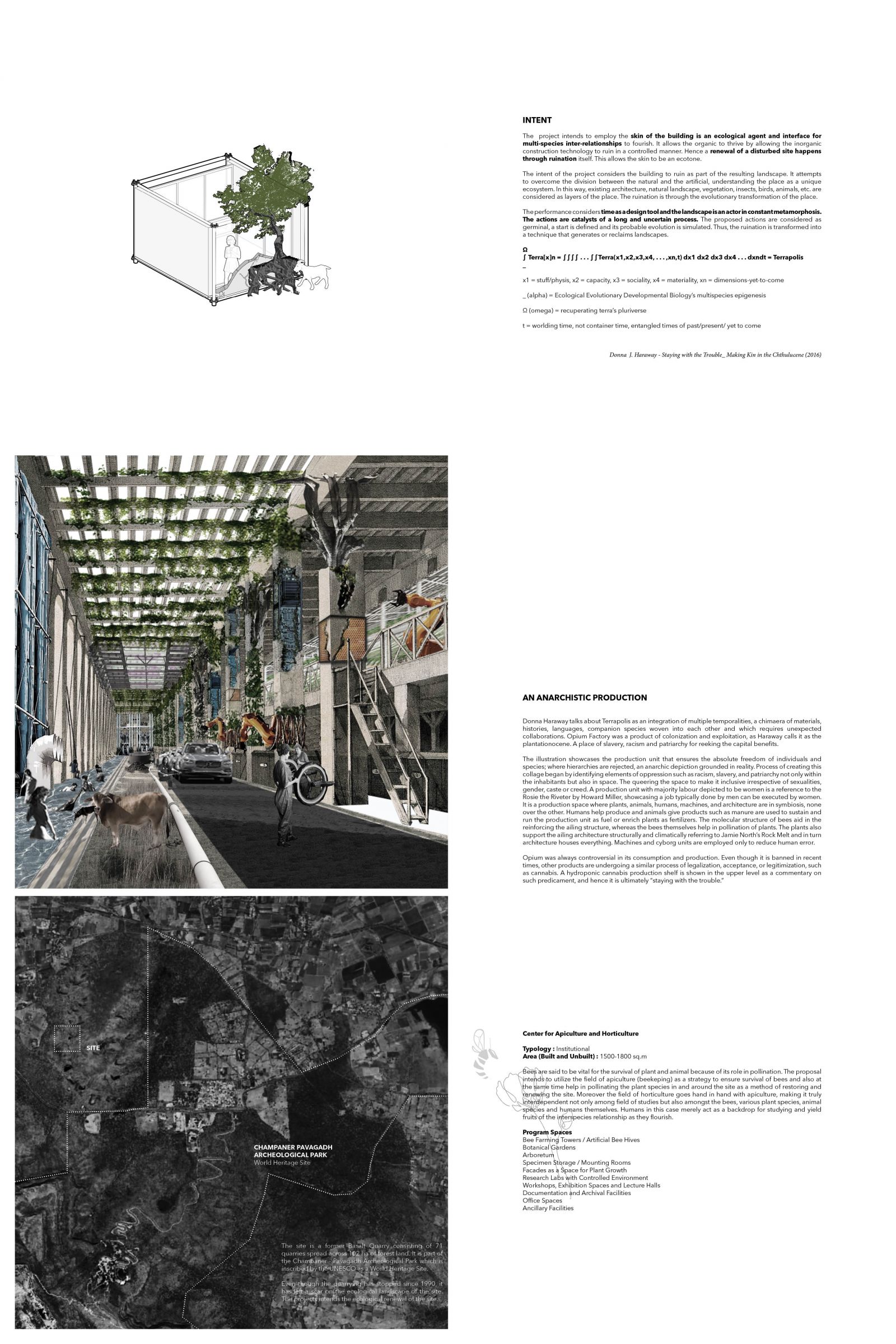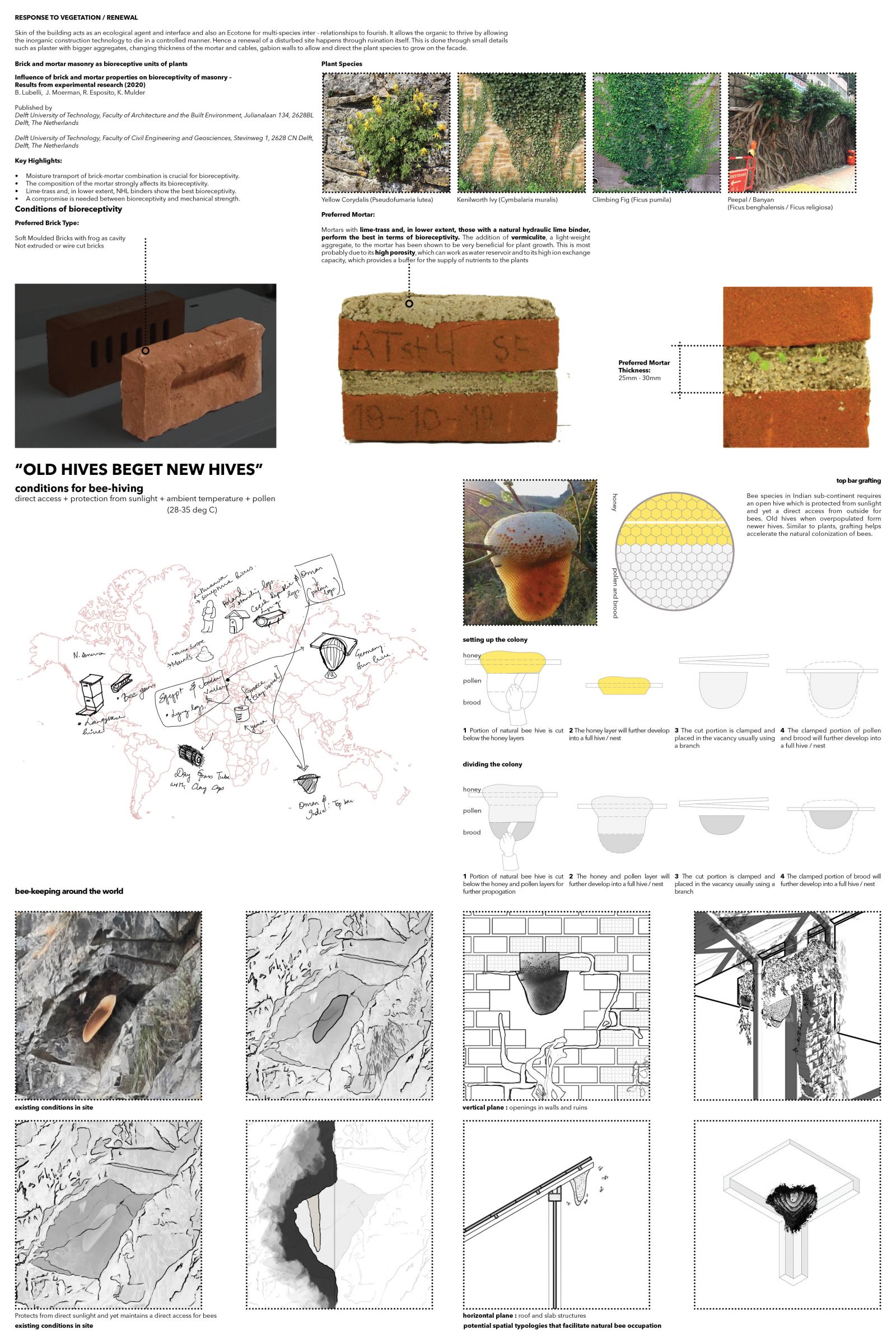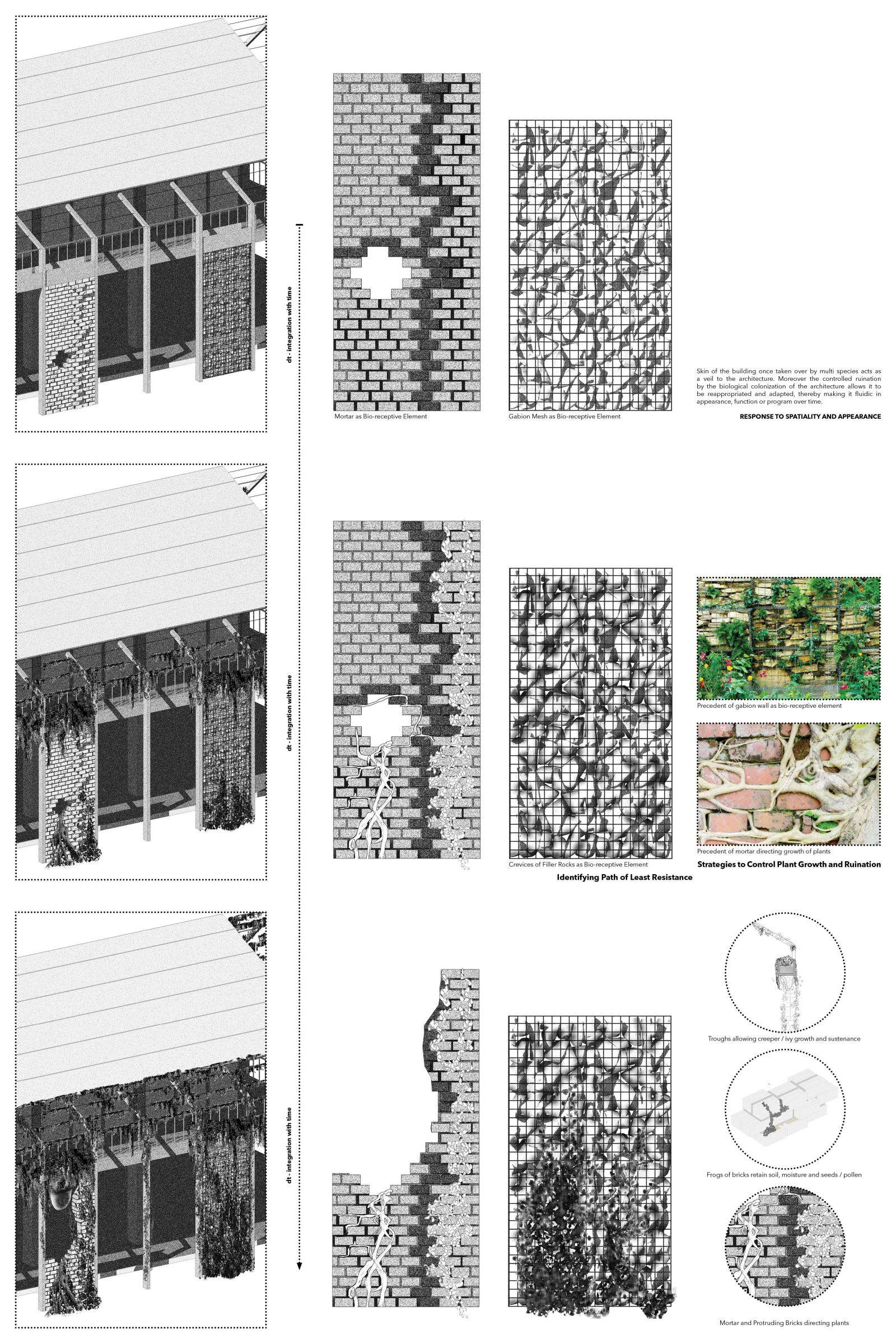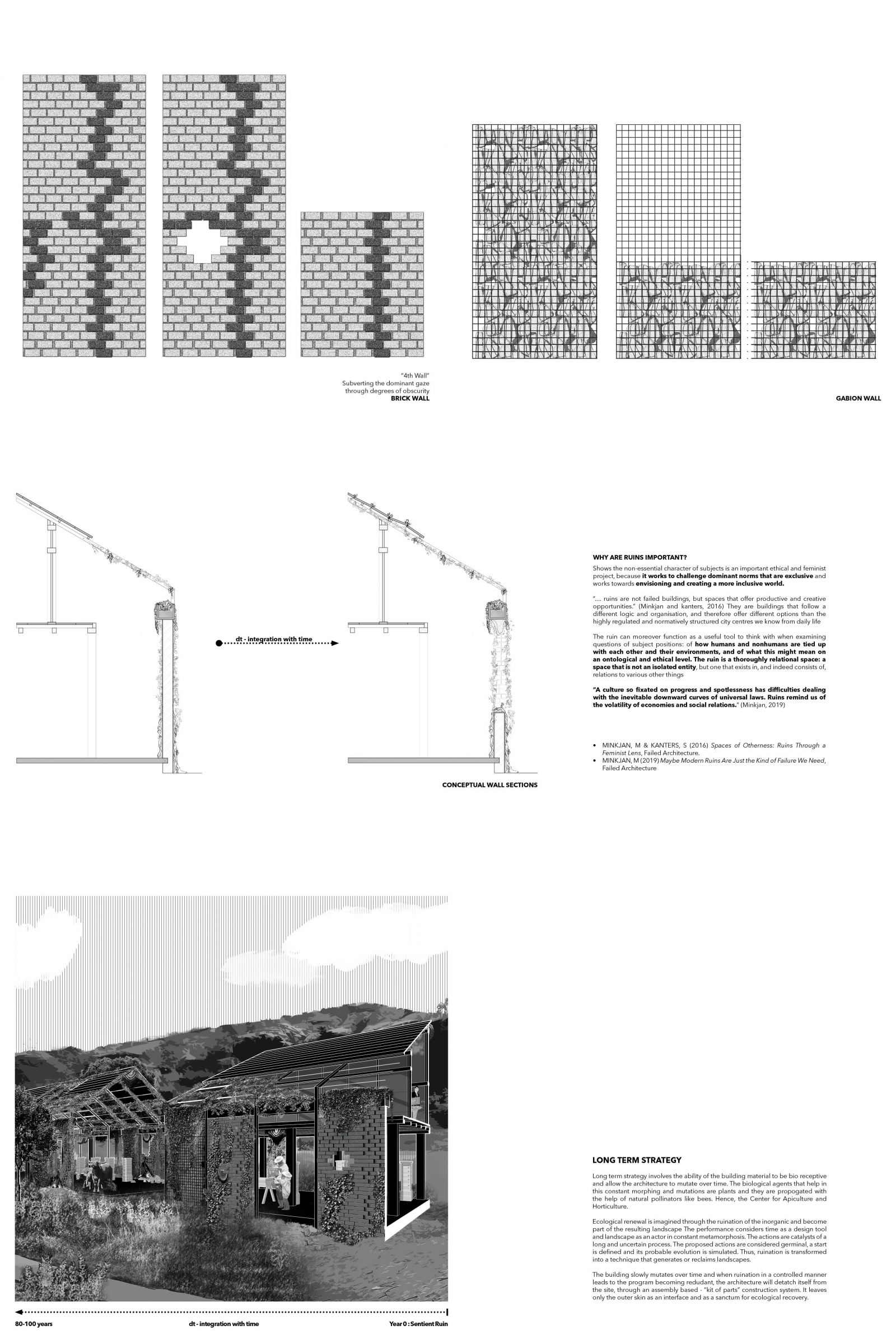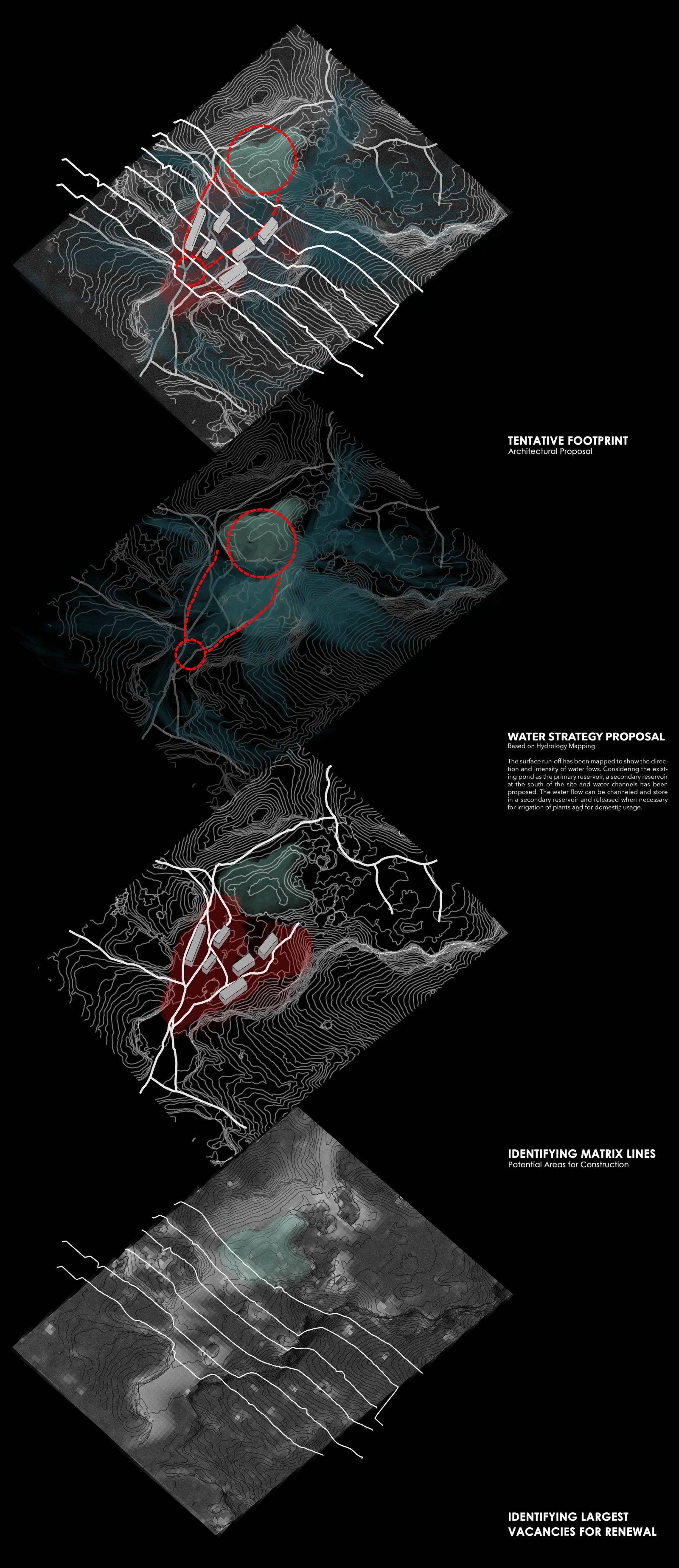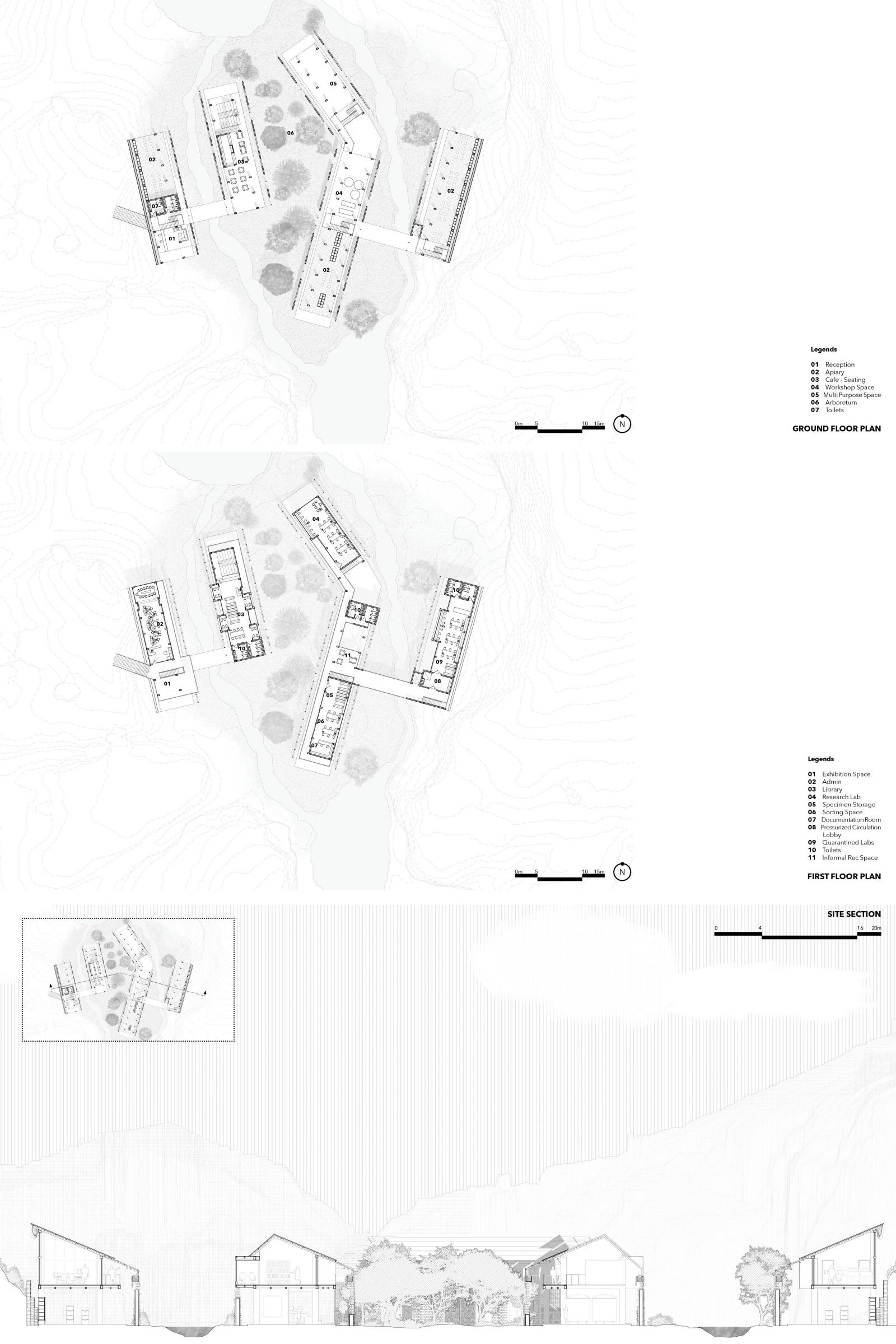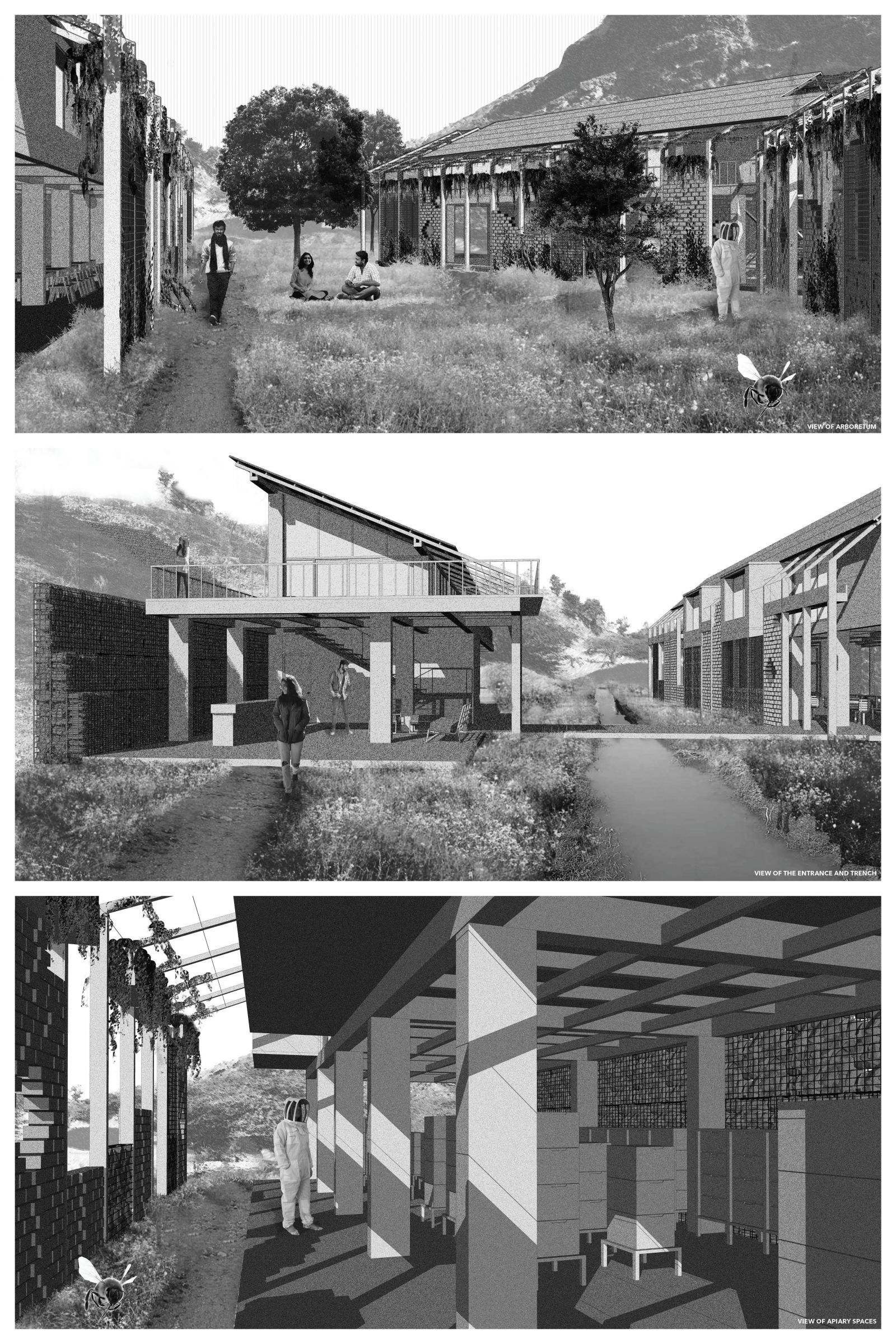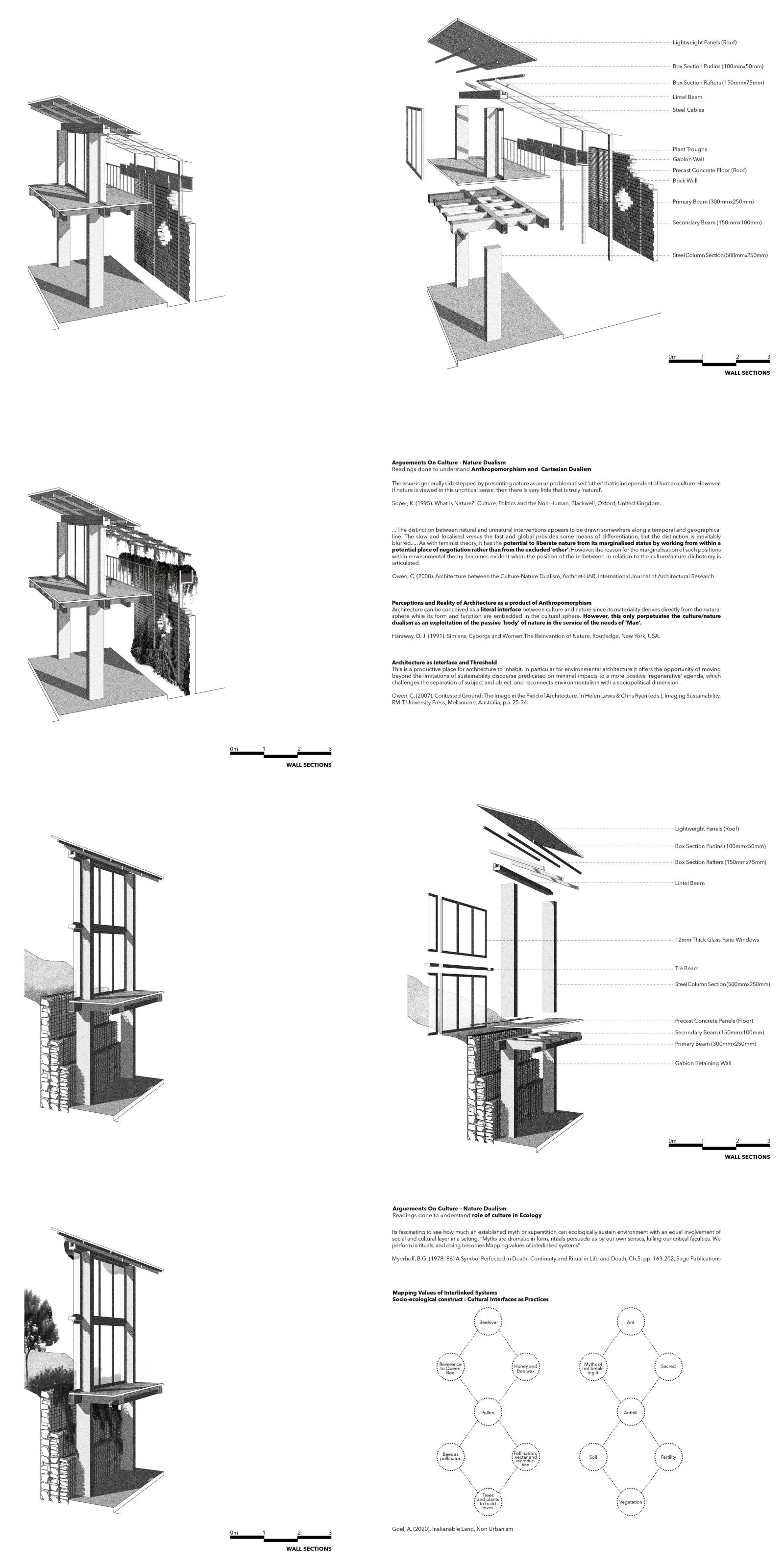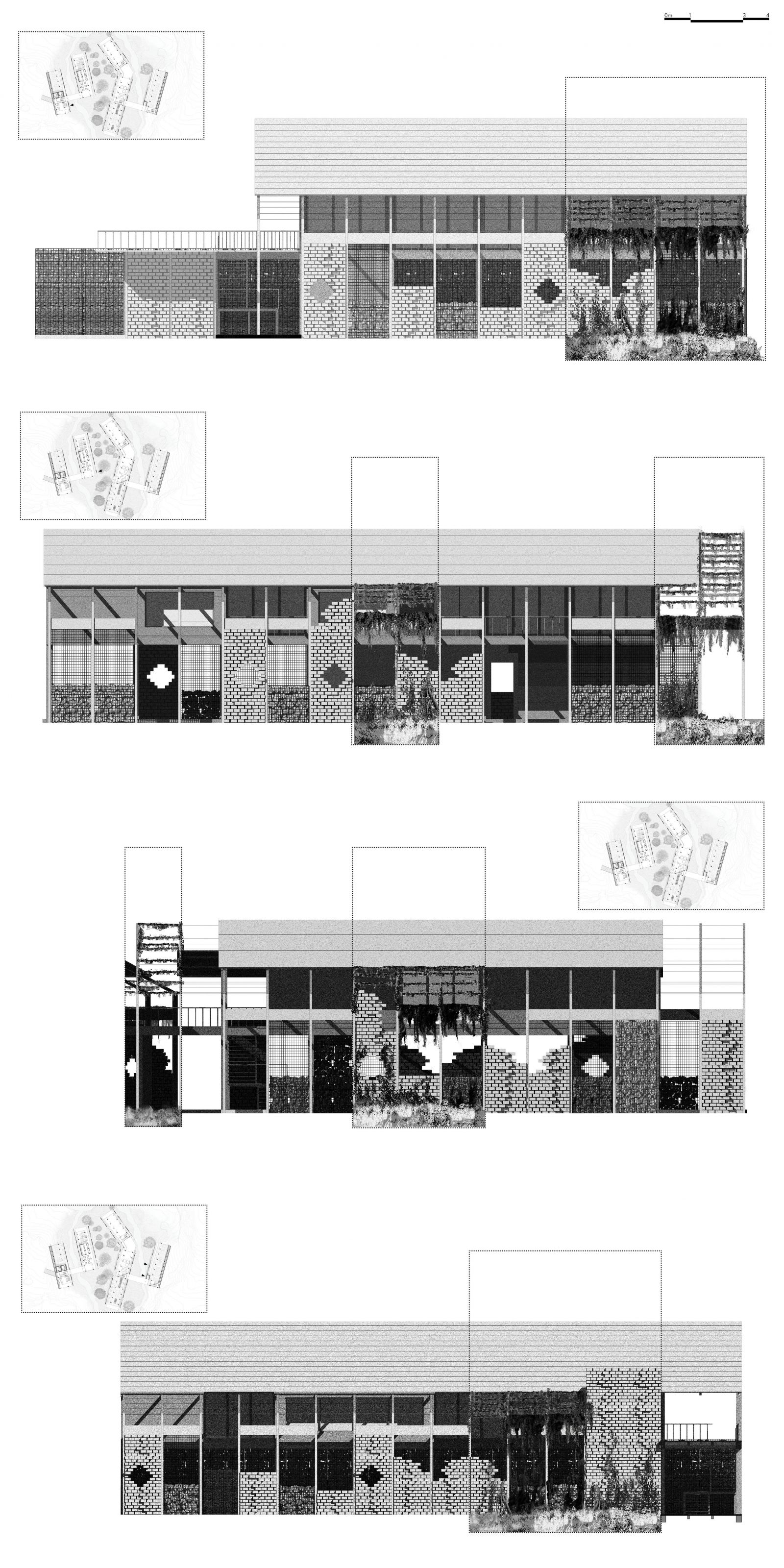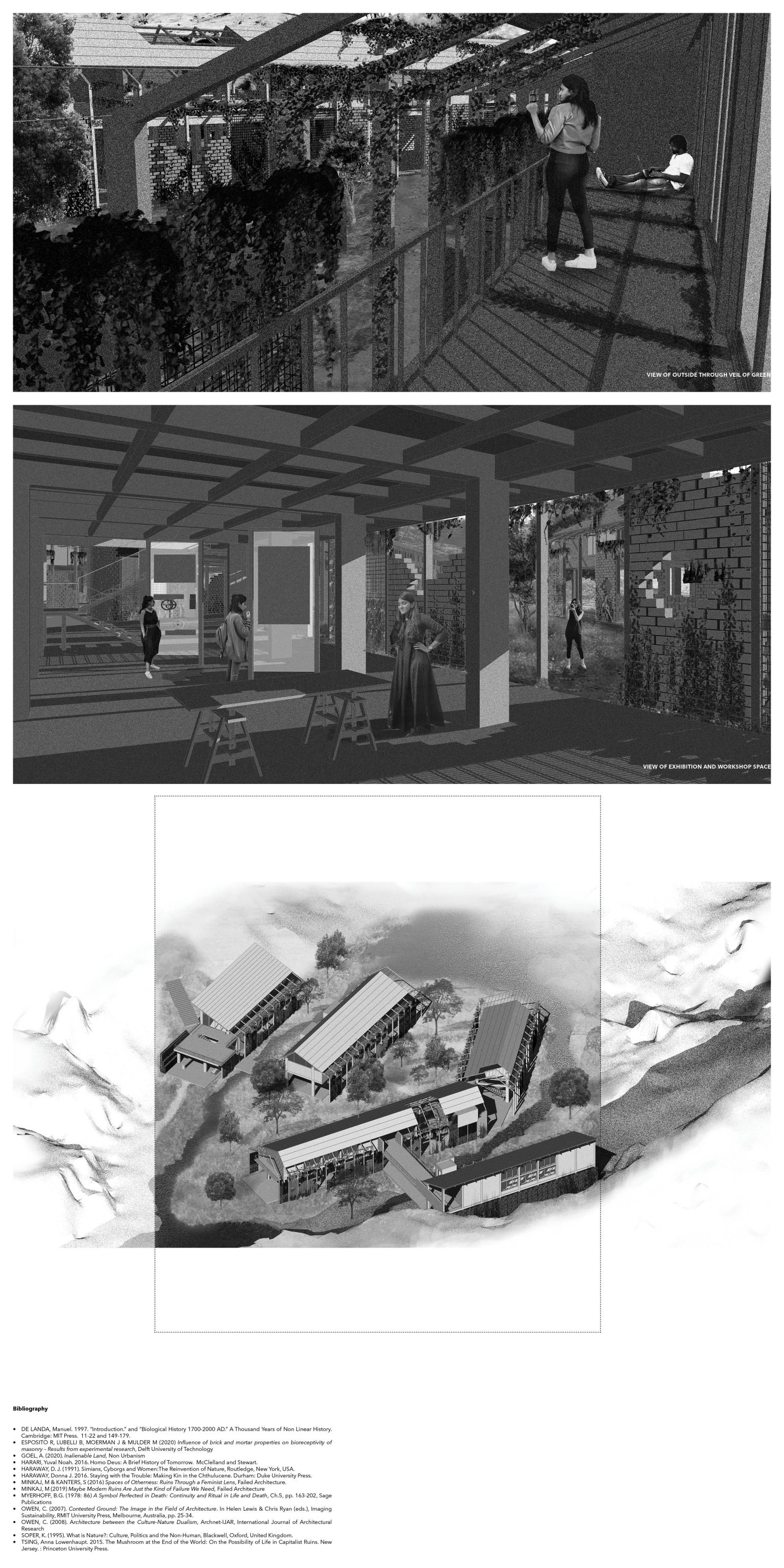Your browser is out-of-date!
For a richer surfing experience on our website, please update your browser. Update my browser now!
For a richer surfing experience on our website, please update your browser. Update my browser now!
The intent of the project considers the building to ruin as part of the resulting landscape, an exercise of the post-humanist ideal. It attempts to overcome the division between the natural and the artificial, understanding the place as a unique ecosystem. In this way, existing architecture, natural landscape, vegetation, insects, birds, animals, etc. are considered as layers of the place. The ruination is through the evolutionary transformation of the place.
The performance considers time as a design tool and the landscape is an actor in constant metamorphosis. The actions are catalysts of a long and uncertain process. The proposed actions are considered germinal, a start is defined and its probable evolution is simulated. Thus, the ruination is transformed into a technique that generates or reclaims landscapes.
